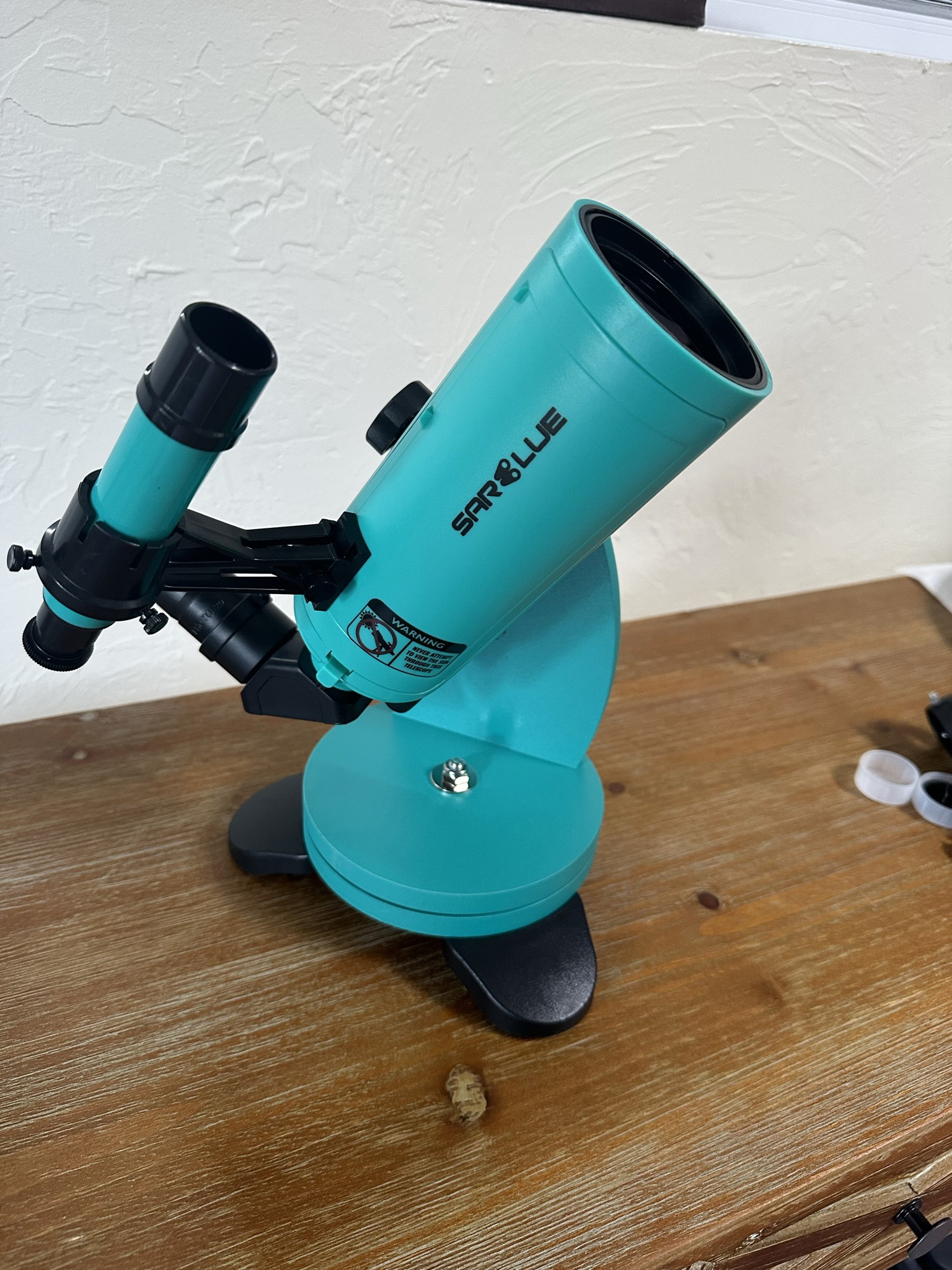The Optical Tube
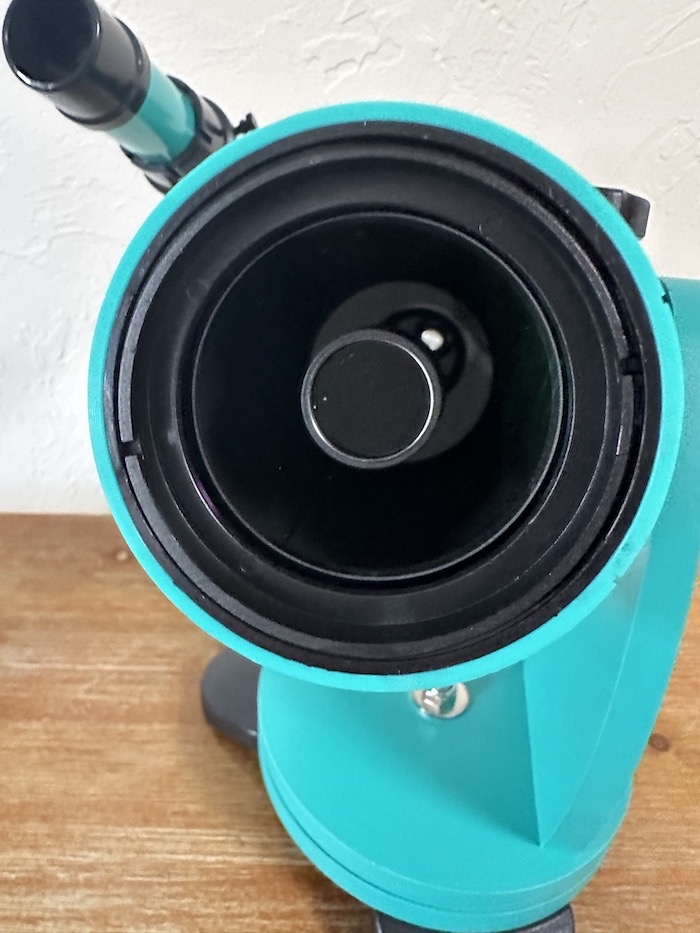
The whole telescope’s body is made of polycarbonate plastic, which is surprisingly strong, and the optical tube takes up about as much space as a tall can of beverage.
The SarBlue Mak60 is a 60mm f/12.5 Maksutov-Cassegrain with a focal length of 800mm.
800mm isn’t actually that long of a focal length. But for a small telescope like the Mak60, such a focal length results in magnifications that produce rather small exit pupils (this determines how much light will enter your eye) and thus dim deep-sky views. It gives a fairly limited field of view, too.
The Mak60’s internal baffle is less than an inch in diameter, and the rear adapter is a 0.965″ fitting (the included star diagonal is compatible with 1.25″ eyepieces), which further limits the telescope’s field of view. With the Mak60, something like a 32mm Plossl eyepiece will vignette (the edge of the field of view is dimmer than the center); the widest possible field of view you can get is about 1.5 degrees across, or about 3 times the angular diameter of the full Moon. This is comparable to the maximum field of view of a typical 10” or 12” Dobsonian.
On the flip side, the Mak60’s optics are simply fantastic, with a perfect star test.
Focusing is done by turning a knob at the back of the telescope, which moves the Mak60’s primary mirror up and down the tube. This movement adjusts the position of the focal plane without physically moving the hardware attached to the back of the scope. Larger telescopes that use this focusing system can experience “image shift” because the mirror wobbles on the threaded shaft. This doesn’t happen with the Mak60’s primary mirror because it is too small and light. I removed the side of the telescope to view the optics and baffles within; the Mak60’s design uses the same precision baffling as a larger catadioptric telescope.
The Mak60 attaches to its tabletop Dobsonian mount with a removable Vixen-style dovetail bar. The dovetail can be removed to expose ¼ 20 sockets for mounting the Mak60 on a standard photo tripod head.
Accessories
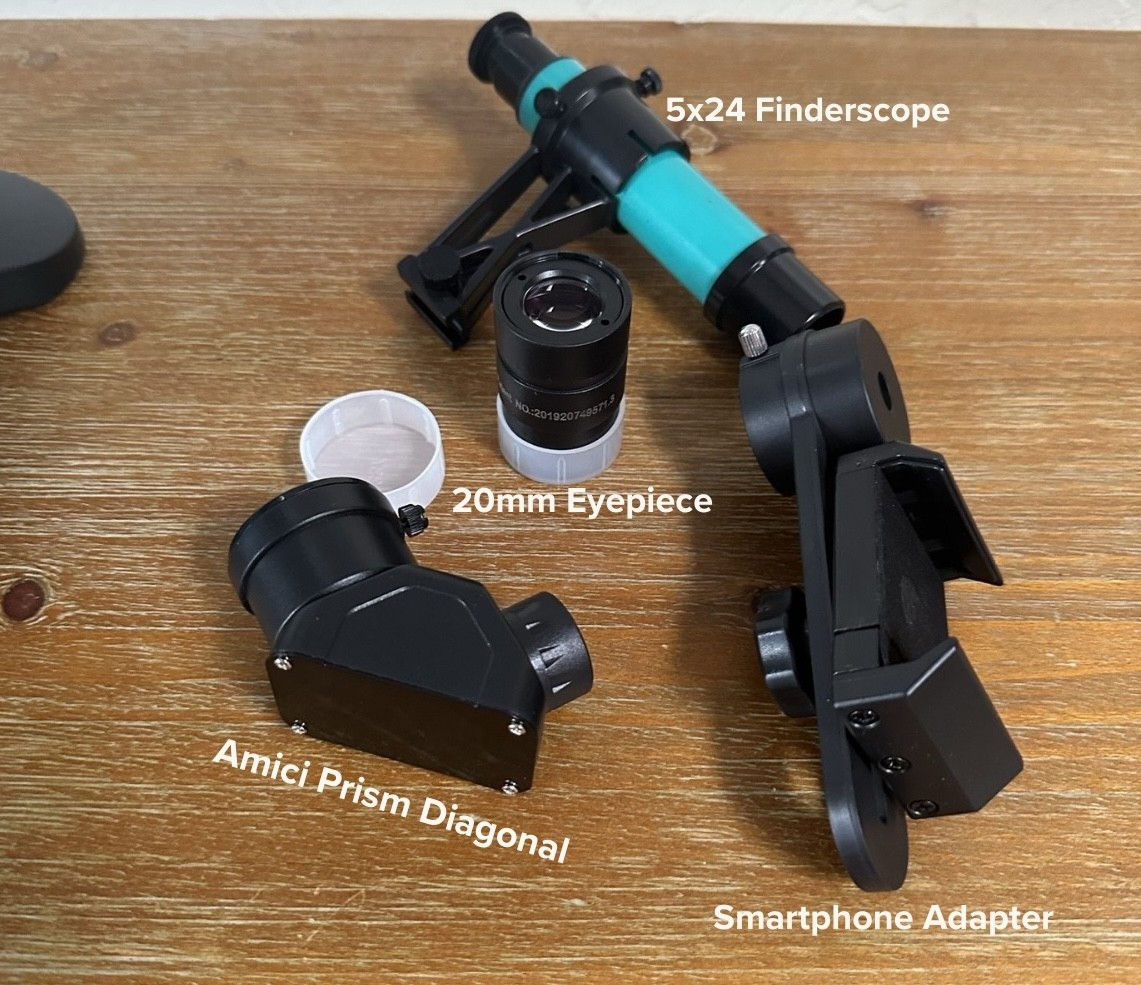
The Mak60’s provided prism star diagonal is plastic-bodied and converts the telescope’s 0.965” rear port to a more standard 1.25” eyepiece holder. The prism type is an Amici, which produces corrected left-right images at the expense of causing some slight glare issues on bright targets. The barrels at both ends also have some internal reflections that I could take care of with some sandpaper. The eyepiece holder can also get rather tight when it’s cold, which I also addressed with a few minutes of sanding.
Despite the issues with the provided diagonal, it is pretty good and doesn’t cause any issues with sharpness or light loss, which is impressive for the price.
The included 20mm 1.25” eyepiece has a similar polycarbonate plastic body to the optical tube and the prism star diagonal. The eyepiece is billed as a Kellner but is actually a different design, probably either a reverse Kellner or Konig (it’s hard for me to tell).
The apparent field of view of the 20-mm eyepiece is about 50 degrees, and it is pretty sharp. However, the 40x magnification with this eyepiece is not sufficient for optimal planetary views, nor is it really pushing the limits of the Mak60’s resolving power. As such, you may want to buy additional eyepieces.
For a finder, the Dobsonian-mounted Mak60 includes a 5×24 unit with plastic optics and a plastic body. These finders are admittedly low-quality and arguably worse than a cheap red dot sight, but they’re just fine for aiming the little Mak60 and quite a bit better than attempting to just sight along the tube.
A basic smartphone adapter is provided with the Mak60 and clamps onto the provided eyepiece. It may not fit all phone models and is prone to upsetting the balance of the telescope. But it does the job for simple Moon photos, and I’ve added below a photo of one that I have personally taken.
Mount
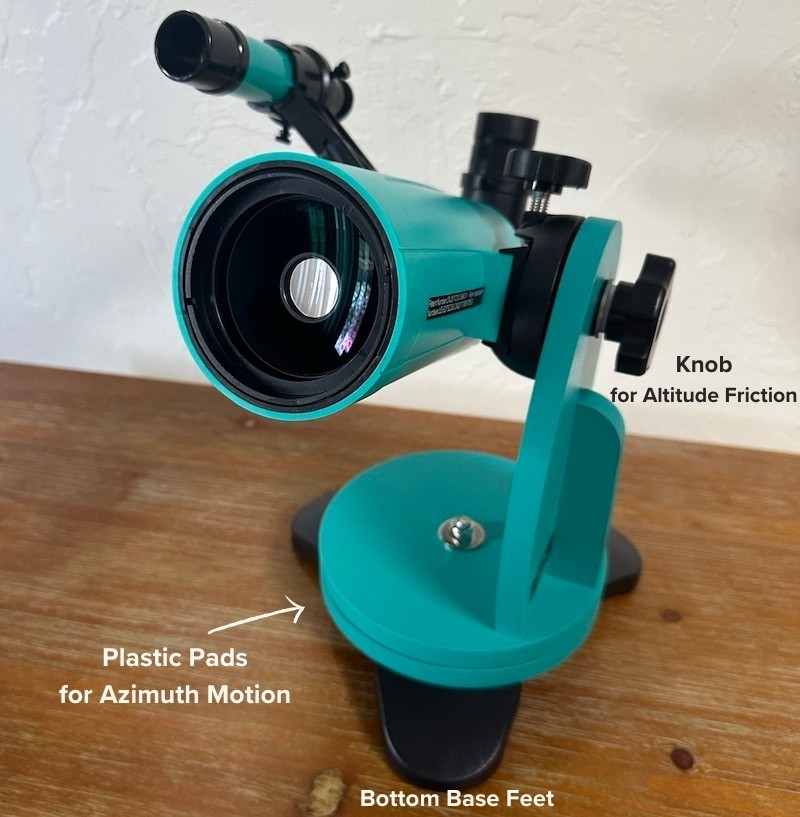
The Mak60 uses a tabletop alt-azimuth mount that pivots up and down as well as left and right, as opposed to a more complicated equatorial mount. The mount of the Mak60 is technically not a true Dobsonian, as I’ve noticed it uses a mere knob and clamp for the altitude axis, but it nonetheless falls under the umbrella name.
You pivot the telescope up and down on a threaded rod, which you can tighten a clutch knob on to adjust friction. It swivels side to side smoothly on a set of three plastic pads, and you can adjust the friction in azimuth with a pair of wrenches or pliers.
The bottom of the base has three feet that splay out to give a wider and steadier footprint.
Should I buy a Used SarBlue Mak60 Dobsonian?
As long as you can get your hands on an undamaged Mak60 with all the accessories for a reasonable price, there’s no reason not to go with a used one.
Alternative Recommendations
The Mak60 isn’t for everyone; its small aperture and long focal length limit it to pretty much only the Moon, planets, and double stars. The majority of the other scopes we recommend at prices below $500 USD are going to be Newtonian reflectors, usually on Dobsonian mounts.
Under $200
- Sarblue introduced Mak70, a bigger version of Mak60, about a year after the introduction of Mak60. They’re, of course, more powerful and a better value for the money.
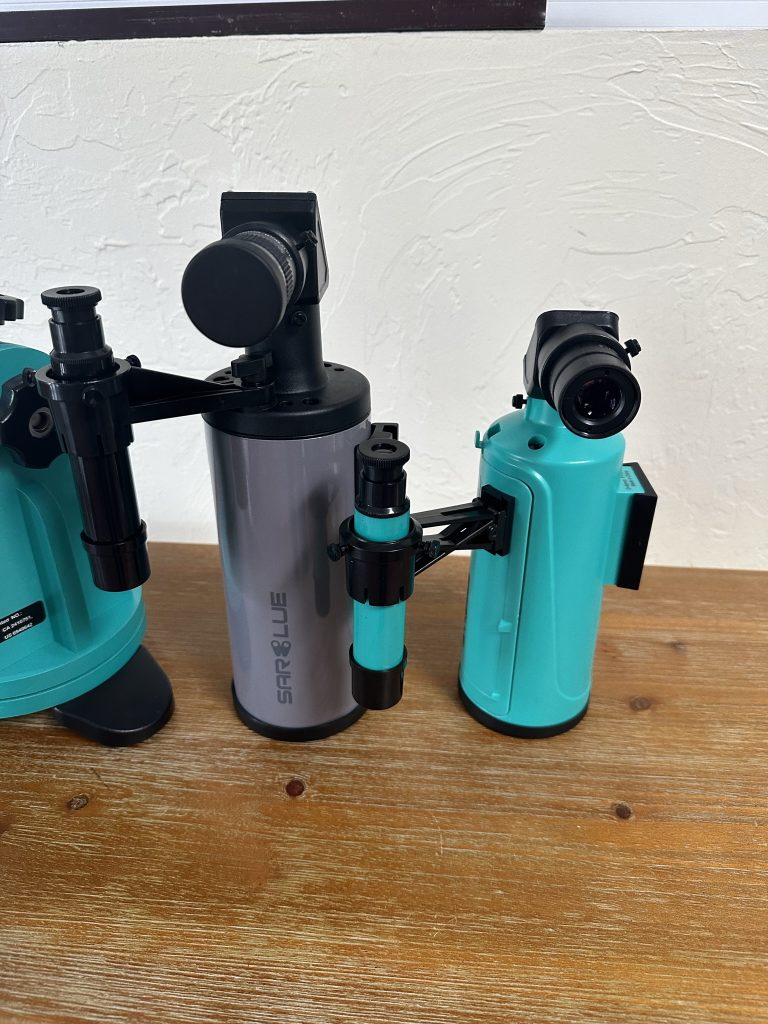
$200-$300
- The Sky-Watcher Heritage 130P offers more than 4x the light-gathering ability and double the resolving power of the Mak60, with a collapsible tube to minimize volume and a lightweight tabletop Dobsonian mount. It’s a great scope for beginners, as is the larger Heritage 150P.
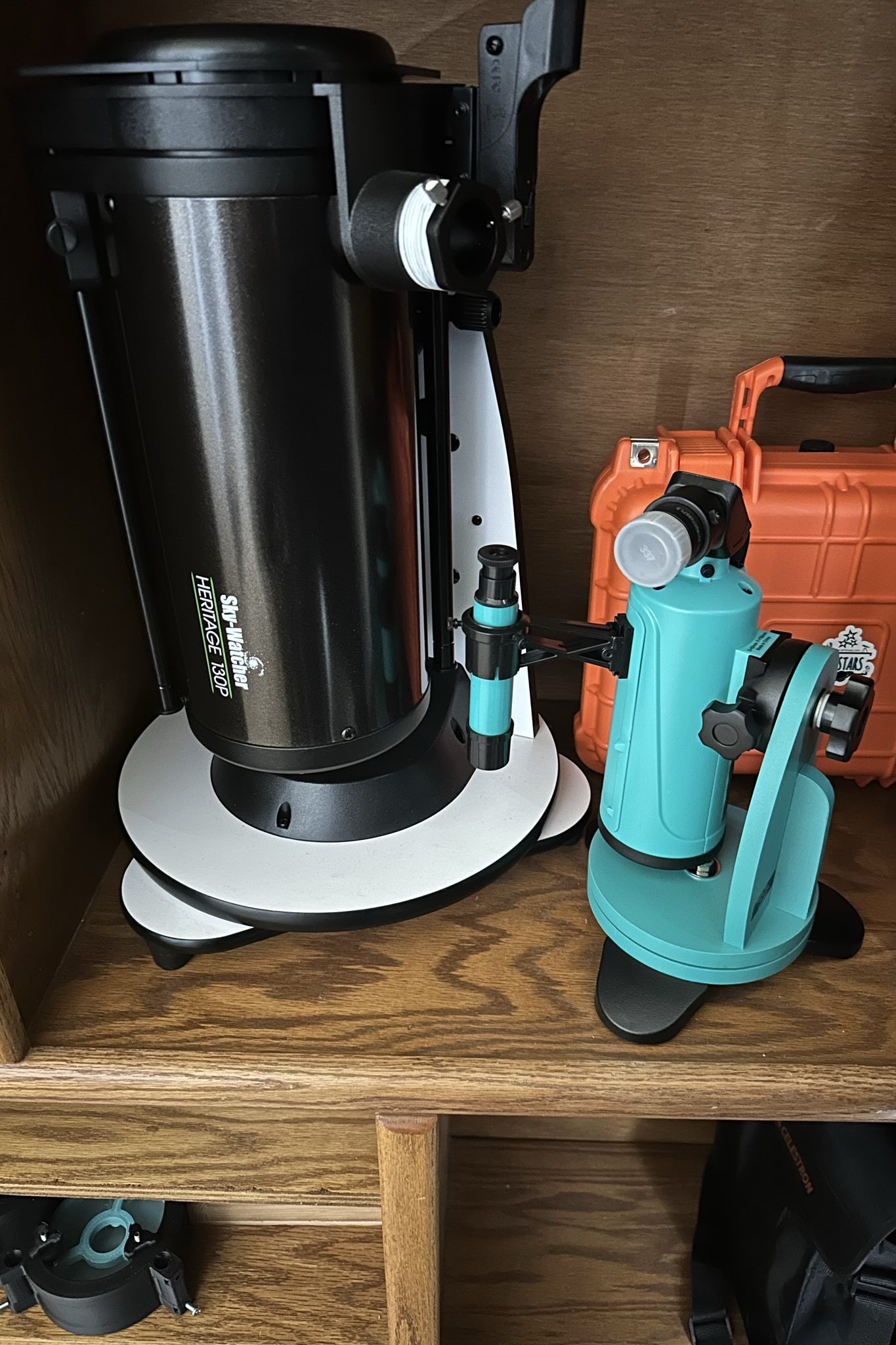
Aftermarket Accessory Recommendations
The SarBlue Mak60 is cheap enough that I wouldn’t recommend spending too much on accessories when your budget could potentially go toward a larger telescope. In any case, there’s not much to improve, and there aren’t many useful items you could realistically add anyway.
The only thing we’d really recommend is the addition of an additional eyepiece for higher magnification. Our pick would be a 9mm (89x) red-line/gold-line eyepiece. The Mak60 can technically handle up to about 125x magnification before images get too fuzzy, dim, or hard to focus, but 89x is more of a realistic upper bound and is enough to resolve finer detail on the Moon and planets anyway.
What can you see with Mak60 with Dobsonian Mount?
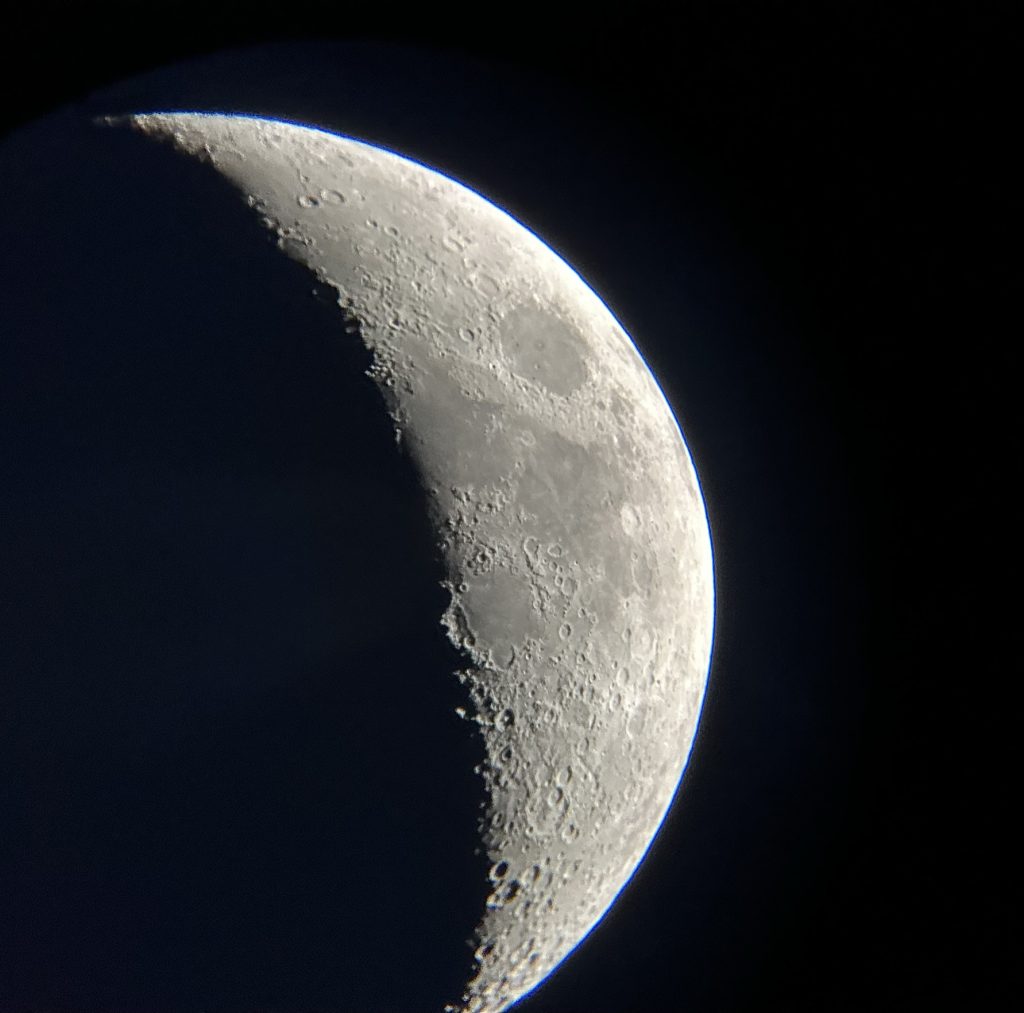
The Mak60’s tiny aperture and limited field of view make it really more of a lunar and planetary scope than anything else. You’ll be able to resolve the phases of Venus and Mercury easily with a higher-power eyepiece. The Moon displays thousands of craters, mountains, and ridges with razor-sharp resolution all the way up to the Mak60’s theoretical upper bound of about 5 miles (7 km) wide lunar surface details. Mars’ polar ice caps are visible, and with luck, a dark marking or two can be resolved when Mars is close to Earth and using a high-power eyepiece. Jupiter’s moons can easily be seen, along with its cloud belts and the Great Red Spot. The Mak60 can just barely resolve the disks of the four large Galilean moons around Jupiter, along with their shadows, when they transit.
The Mak60 will have no trouble showing you Saturn’s rings, and a steady night will allow you to see the Cassini Division within them along with a couple of moons and some dull stripes on Saturn itself. Uranus and Neptune are mere greenish and blueish dots; Uranus’ disk is hypothetically resolvable but appears as a puffy “star” at best, while Neptune essentially remains a pinpoint; their moons are far too dim to see with the Mak60’s meager aperture, as is distant and tiny Pluto.
The Mak60 can show you some deep-sky objects, too. Globular star clusters and planetary nebulae are mere fuzzy balls, but you can still look at some bright open star clusters. The Orion Nebula shows the Trapezium star cluster within and some of its shape, while the Lagoon Nebula has a visible glow. You can also see some of the brightest galaxies, such as M31, the Andromeda Galaxy—the Mak60 may even reveal M32, the brighter of its two orbiting companion galaxies. Most galaxies will, however, lack detail or simply be invisible, so don’t expect much. The Mak60 can also split double stars right down to the theoretical limit of 2 arc seconds apart, and its lack of chromatic aberration (as in a refractor) or diffraction spikes (as in most reflectors) gives it an edge even over slightly larger instruments, as do its nearly perfect optics.

